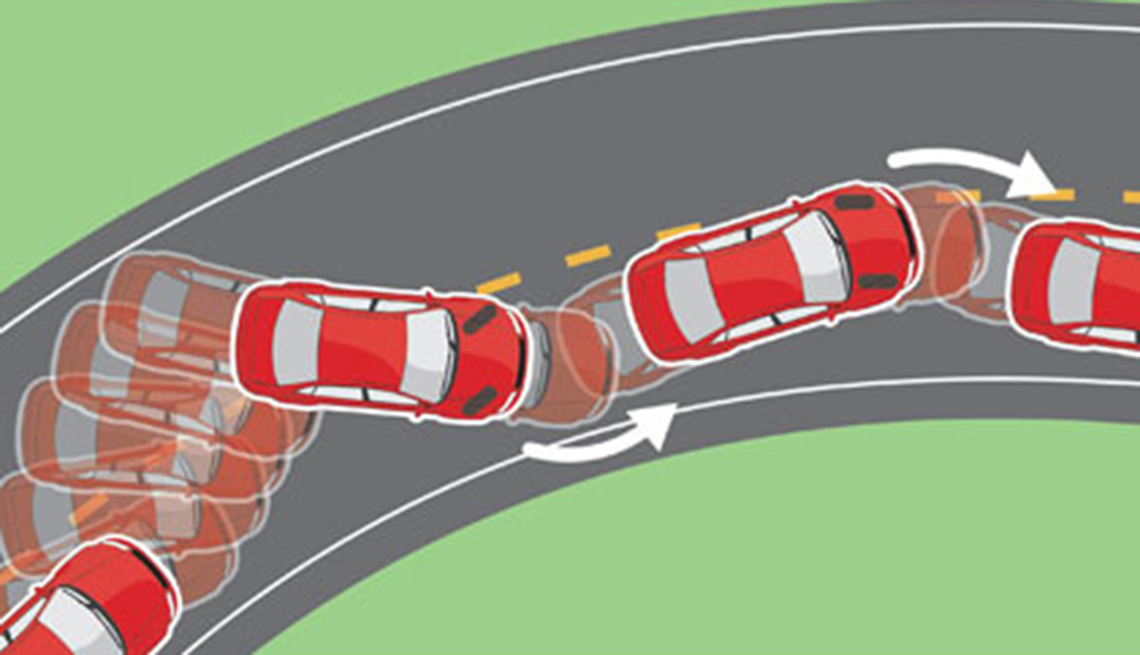When you find yourself in a skid while driving, it’s essential to remain calm and focused. Panic can exacerbate the situation, making it harder to regain control of your vehicle. Take a deep breath and assess the severity of the skid. Is it a minor slide, or are you completely out of control? Understanding the extent of the skid will help you determine the appropriate course of action.
Steer into the Skid
One of the most crucial steps in handling a skid is to steer into the direction of the skid. This means turning your steering wheel in the same direction that the rear of your vehicle is sliding. By doing so, you can regain traction and stabilize your vehicle. It’s important to avoid overcompensating or jerking the steering wheel, as this can lead to a loss of control. Instead, make smooth and gradual steering adjustments to correct the skid.
Avoid Slamming on the Brakes
While your initial instinct may be to slam on the brakes when you begin to skid, this can actually worsen the situation. Braking abruptly can cause your wheels to lock up, further reducing traction and making it harder to regain control of your vehicle. Instead, focus on steering and gently easing off the accelerator pedal to slow down gradually. If your vehicle is equipped with anti-lock brakes (ABS), continue to apply steady pressure to the brake pedal while steering into the skid.
Shift Your Focus
As you work to regain control of your vehicle during a skid, it’s important to shift your focus to where you want to go rather than fixating on the obstacle or hazard in front of you. Look in the direction you want to steer and keep your eyes on the road ahead. This will help you maintain spatial awareness and make more accurate steering adjustments to navigate out of the skid safely.
Mind Your Speed and Environment
Prevention is key when it comes to skidding. Pay attention to your speed and adjust it accordingly based on road conditions, weather, and visibility. Reduce your speed when driving on wet, icy, or slippery roads, and increase your following distance to allow for greater reaction time. Avoid sudden movements or sharp turns, especially when driving at higher speeds or on winding roads where skidding is more likely to occur.
Practice Defensive Driving Techniques
Being proactive and practicing defensive driving techniques can help you avoid skids and other dangerous situations on the road. Stay alert, scan your surroundings, and anticipate potential hazards or obstacles. Maintain a safe distance from other vehicles, signal your intentions early, and avoid distractions such as texting or talking on the phone while driving. By staying vigilant and prepared, you can reduce the risk of skidding and ensure your safety on the road.
Know When to Seek Professional Help
In some cases, skidding may be caused by mechanical issues or vehicle malfunctions that require professional attention. If you experience recurring skidding or loss of control while driving, it’s important to have your vehicle inspected by a qualified mechanic to identify and address any underlying issues. Don’t ignore warning signs such as unusual noises, vibrations, or handling problems, as these could indicate potential safety hazards that need to be addressed promptly.
Steering Clear of Trouble
In conclusion, knowing how to handle a skid can mean the difference between a close call and a serious accident on the road. By staying calm, steering into the skid, avoiding sudden braking, shifting your focus, minding your speed and environment, practicing defensive driving techniques, and knowing when to seek professional help, you can navigate slippery situations with confidence and keep yourself and others safe on the road. So remember, when the going gets tough, stay cool, stay focused, and steer clear of trouble.
